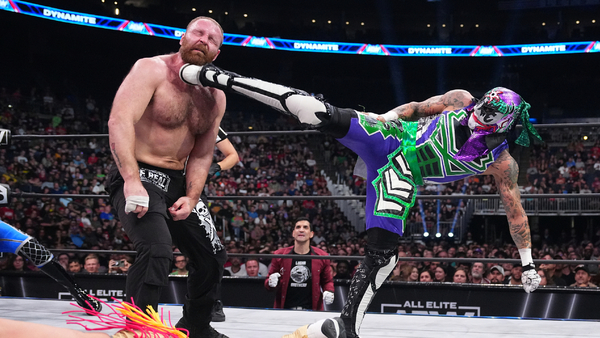How Wrestling's Present Brilliance Has RUINED Its Future

When a wrestler does take the advantage early, many of them fly to the outside of the ring to launch their frame into their opponents.
It's weirdly instinctive, like they can't help themselves but chase that pop, and to underscore that, CM Punk built Darby Allin in the media ahead of his AEW debut at All Out '21 by declaring that everybody should retire their dive. Nobody does it like Darby (and they don't). Punk should have listened to his own veteran advice: he injured himself with a far inferior dive at the very same event a year later. Punk isn't the only wrestler to stumble into this lack of discipline, to just do stuff that you've already seen on the undercard and that he isn't exactly outstanding at - and what's worrying is that he can really play.
His work has meaning, he links everything together brilliantly, he performs with a rare sense of wit and personality. If even Punk, the least self-conscious in-ring great ever, a wrestler who will smirk at the idea of chasing a star rating and take perverse, contrarian delight in getting a body slam over, can't stop doing extra stuff because it's so endemic - what chance do his successors have? It's not just Punk. Jon Moxley, who has otherwise mastered what he calls death jitsu - a seamless blend of the cool but less ostentatious styles - death match, brawl, worked shoot - is also guilty of the flying high-five.
When the melee sprawls to the outside, almost inevitably, a wrestler will either throw their opponent against the apron or the ensuing struggle back into the ring will result in a suspenseful battle leading to a bump on the apron - package piledriver, suplex, or, and this often looks foolish, a cutter. Even the geography of wrestling is one land now.
A furious cloudburst exchange of counters and finisher reversals often define the finishing sequence, and this rhythm crept in shortly after the resurgence of New Japan Pro Wrestling and its coveted asterisks drifted westward. Over time, this became the new currency of critical acclaim. And, while certain WWE wrestlers may have scoffed at the idea that NJPW was better, they sure did chase it at the same time - the move-set and the rhythm of strong style psychology.
CONT'D...(3 of 5)